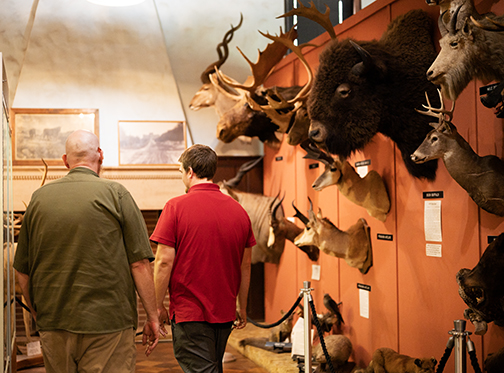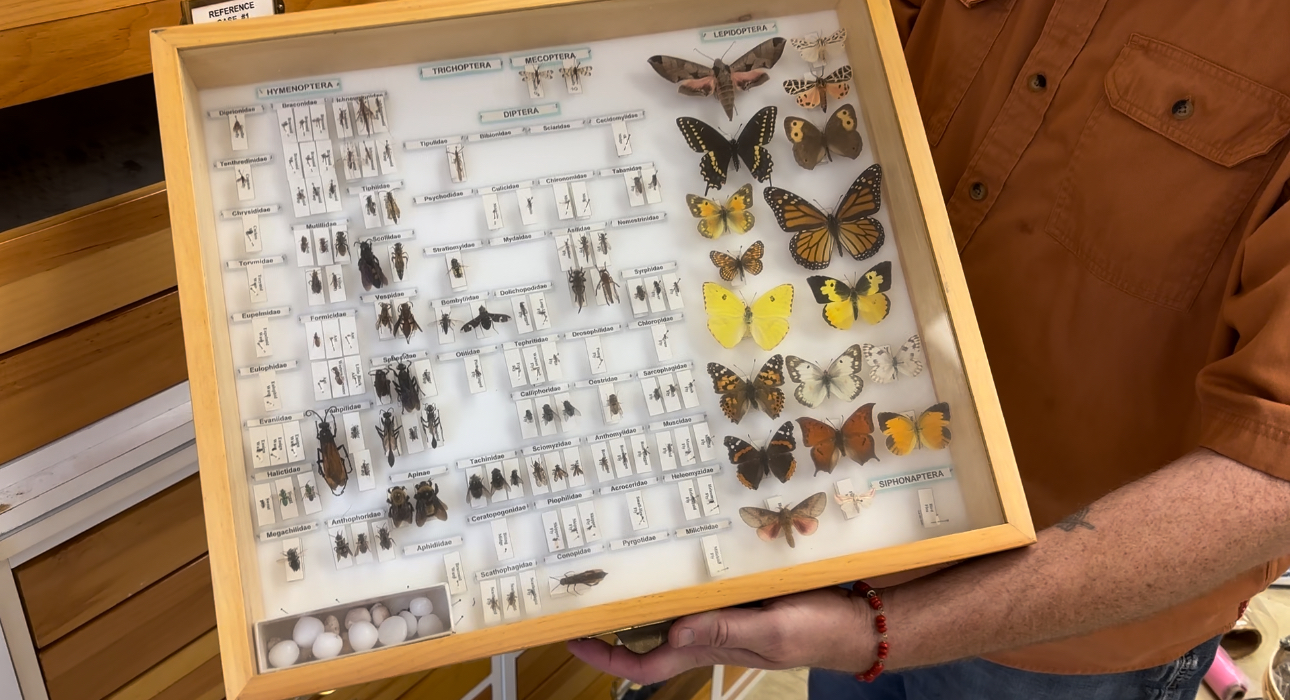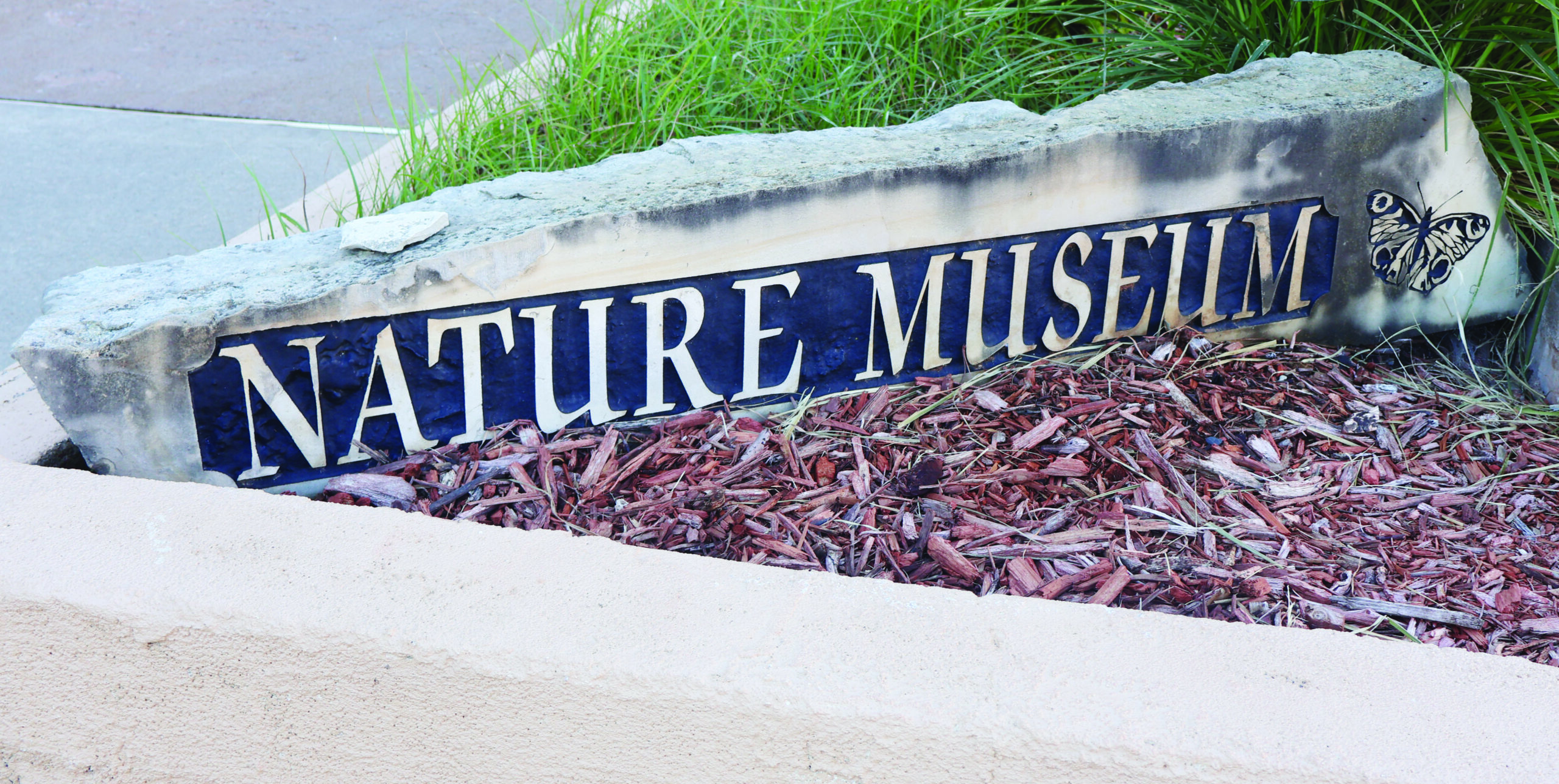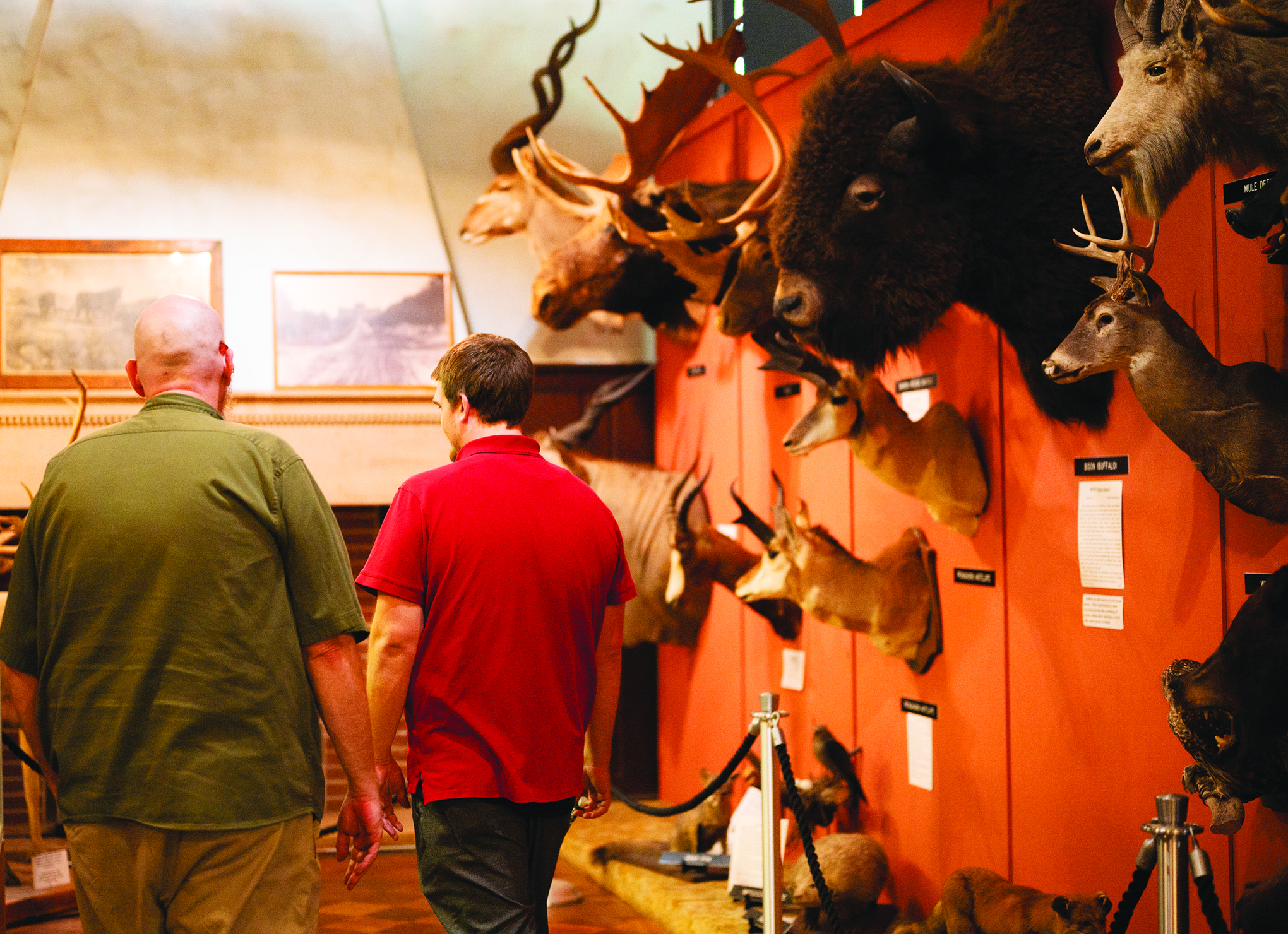By TARA OWEN
Senior Reporter
The Museum of Natural History on campus received a donation that tripled the inventory.
Around 12,000 specimens were donated this past spring to the museum.
The donations were from the owners of the Gypsum Hills Nature Museum in Hardtner Kansas.
Some of the recently donated items are already on display at the museum, but many are still being prepared to be put on display.
“We are still doing inventory and a basic count on the donated items, not all of the things that were donated will be able to be out at the museum,” Director of the Museum of Natural History, Thomas Cornell said. “but it allows for a great opportunity to rotate out our collections every once in a while.”
The largest donated item to the museum was a moose head.
Which is currently inside the museum but is waiting to be mounted to the wall.
A large portion of the donated items were moths, butterflies and other insects.
Primarily from the Northwest Oklahoma and Southwest Kansas area.
“The donated collection used to be one of the largest collections of private collections of butterflies and moths,” Cornell said.
The museum studies class at Northwestern will also be adding a few new displays that will be coming to the museum this semester.
Northwestern’s visual arts classes have also used the museum as a resource in their classes.
Along with the professional practices and gallery administration class.
“We still have two rooms of collections in the research collections that we are still sorting through to see all that we have as I am relativity new to the institution,” said Cornell
The remaining donated items are in the research collection room which is available to students by appointment.
“The research collection is always available for graduate and undergraduate students as a resource,” said Cornell.
Established in 1902 the museum is the second oldest in Oklahoma. Northwestern’s Museum of Natural History was established by G. W. Stevens, head of the biology department at that time. According to the museum’s web page, in 1908, Stevens and former student assistant and protégé, T.C. Carter, traveled to Alaska where they spent seven months collecting hundreds of specimens of mammals, birds and bird eggs to bring back to the campus museum.
Those Alaskan materials were then added to the museum, which already contained an extensive collection of biological specimens native to the Oklahoma area. Stevens left Northwestern in 1916 but Carter taught at the University until his retirement in 1952. Carter and his students collected and/or prepared much of the material that remains on display today.
For more information on the museum head to https://www.nwosu.edu/school-of-arts-and-sciences/natural-science/museum-of-natural-history




